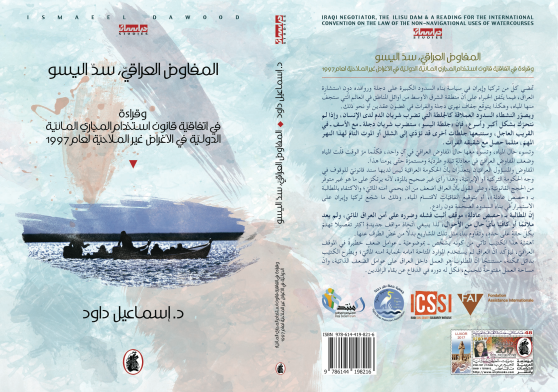Beirut –
“Al-Quds Al-Arabi”: Recently published by the Arab Institution for Studies and Publishing in Beirut, a booklet titled “The Iraqi Negotiator and the Ilisu Dam” addresses a highly sensitive topic, namely the issue of shared water resources in the Tigris and Euphrates river basins. This topic is shrouded in secrecy due to the reluctance of countries to disclose their related policies.
The significance of the author lies in his objective identification of serious weaknesses in the Iraqi stance, emphasizing that Iraq has not utilized available resources to protect its water security. The booklet proposes possible alternatives, emphasizing that the scope of action is open to all, as everyone bears responsibility for safeguarding the Tigris and Euphrates.
Over the past decades, both Turkey and Iran have pursued policies of building large dams on the Tigris and its tributaries without consulting Iraq. Experts agree that the Middle East is one of the first regions in the world where water will run dry, with the Tigris and Euphrates rivers expected to dry up within two decades or so.
The author presents a contrasting view, likening the giant dams built on major rivers to “clots striking a vital artery in the human body,” and warns that if the Tigris river dries up, there will be only a few months left before the “clot of Ilisu” strikes this important artery.
The Iraqi negotiator’s general stance, demanding shares, is strongly criticized as having failed and harmed Iraq’s water security, no longer being suitable or sufficient under any circumstances. The author highlights a reciprocal relationship between the poor state of water and the poor performance of the Iraqi negotiator, noting that “as time passes, water decreases and the Iraqi negotiator weakens.” He emphasizes that the negotiator and Iraqi officials are hampered by the fact that the Iraqi government lacks legal grounds to confront the Turkish or Iranian governments, describing this assessment as “completely incorrect as it focuses on what is not available.”
The author is divided into four chapters, with the first chapter discussing the policies of neighboring countries in building large dams without consultation, contrary to international norms, laws, and principles of good neighborliness, and their impact on Iraq’s fragile water security, citing examples such as the Ilisu Dam on the Tigris River, and some dams in Iran as examples.
The second chapter is a quick review of the situation and position of the Iraqi negotiator and official regarding the issue of international waterways after 2006. How they faced the large dams and their impact on Iraq’s water security, highlighting selected examples of positions of Iraqi ministers and officials on the Ilisu Dam, identifying weaknesses based on the discussion of these positions, and presenting possible solutions and alternatives. The first and second chapters in general represent an introduction to the important third chapter.
The third chapter includes a reading of the Agreement on the Law of Non-Navigational Uses of International Watercourses of 1997, which entered into force in May 2014, discussing its importance, issuance conditions, and Iraq’s negotiating position in its light, enhancing the discussion by addressing the model of the Ilisu Dam and possible actions around it as an example. While the fourth chapter includes attachments of utmost importance, such as a letter from former Iraqi Foreign Minister Hoshyar Zebari to the European Union High Representative for Foreign Affairs in 2007, and some of the Iraqi government’s discussions with the Syrian side, and the Turkish side on the issue of the Ilisu Dam and related agreements.
The Iraqi book author Ismail Dawood describes the printing and distribution of this booklet, at this time (in the final stages of completing the Ilisu Dam project on the Tigris River) as throwing a stone into stagnant waters to stir them up. He wonders, “Is it conceivable that the risks to Iraq’s water security will grow to the extent that it threatens the existence of the Tigris and Euphrates rivers without us moving a finger?”
The book consists of 224 pages in medium format.


Leave a Reply